by GardenLover | Dec 25, 2018 | Gardens to Drive, Twelve Days of Christmas
Twelve Drummers Drumming
 Repost from Dec. 25, 2014: Pipe Down to Hear What a Garden Has to Say
Repost from Dec. 25, 2014: Pipe Down to Hear What a Garden Has to Say
By Michael Leach
A dozen piping pipers could be fine in some gardens, but for most of us,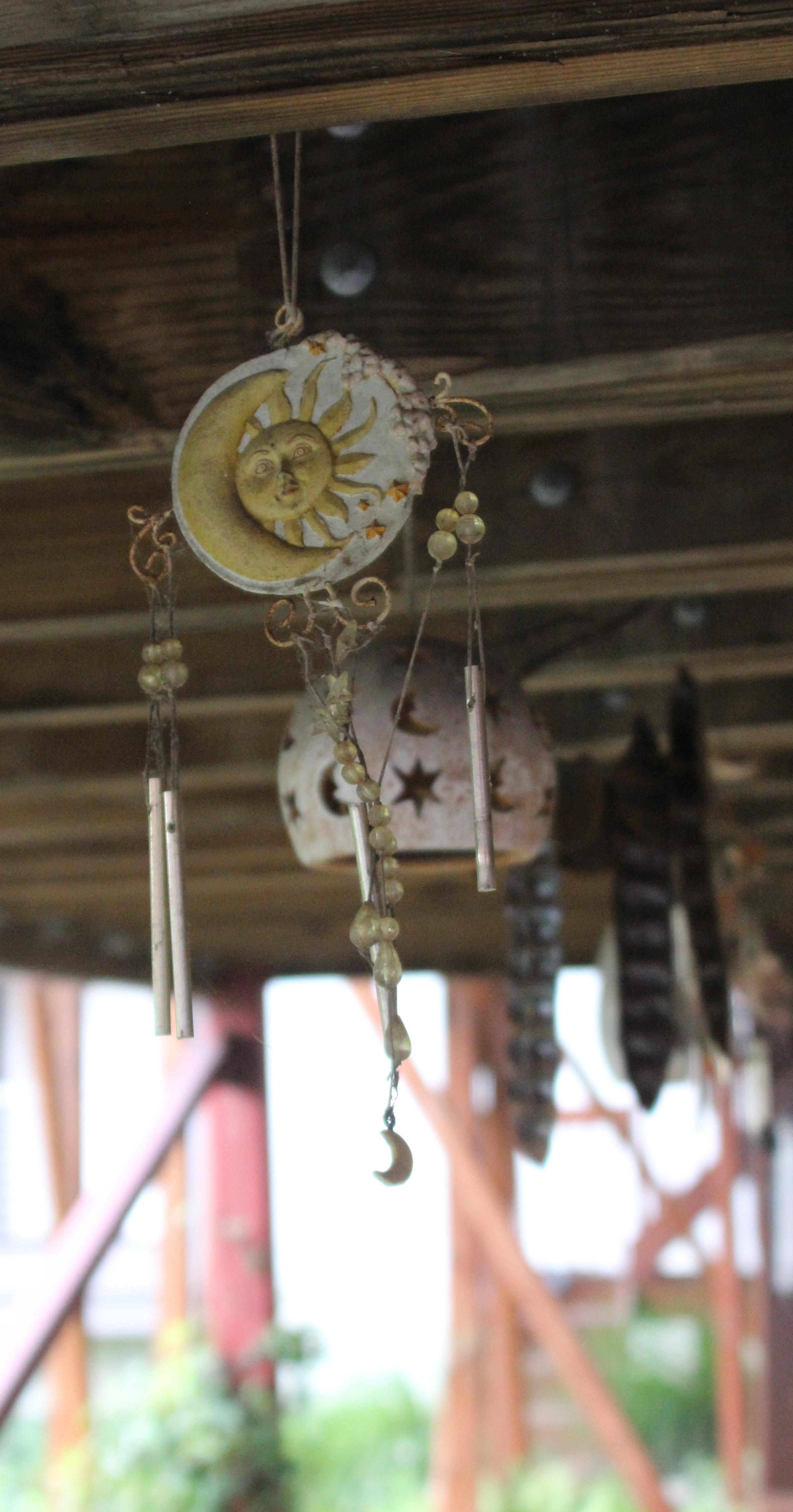 wind chimes and fountains are the only tolerable decibels.
wind chimes and fountains are the only tolerable decibels.
Unless bluejays squawk about a lack of peanuts, the wind roars through frantic tree tops, or a riding mower pretends to be a biker-gang Harley, sound rarely breaks into our consciousness in a garden. That’s largely due to gardens being places traditionally sought for their quiet. Yet a garden can be “noisy.”
The garden’s gentle, subtle tongue speaks in the rustle of leaves. It whispers with the warm breath of breezes caressing our skin. It hums startlingly when a hummingbird whirs past in zigzag swoops.
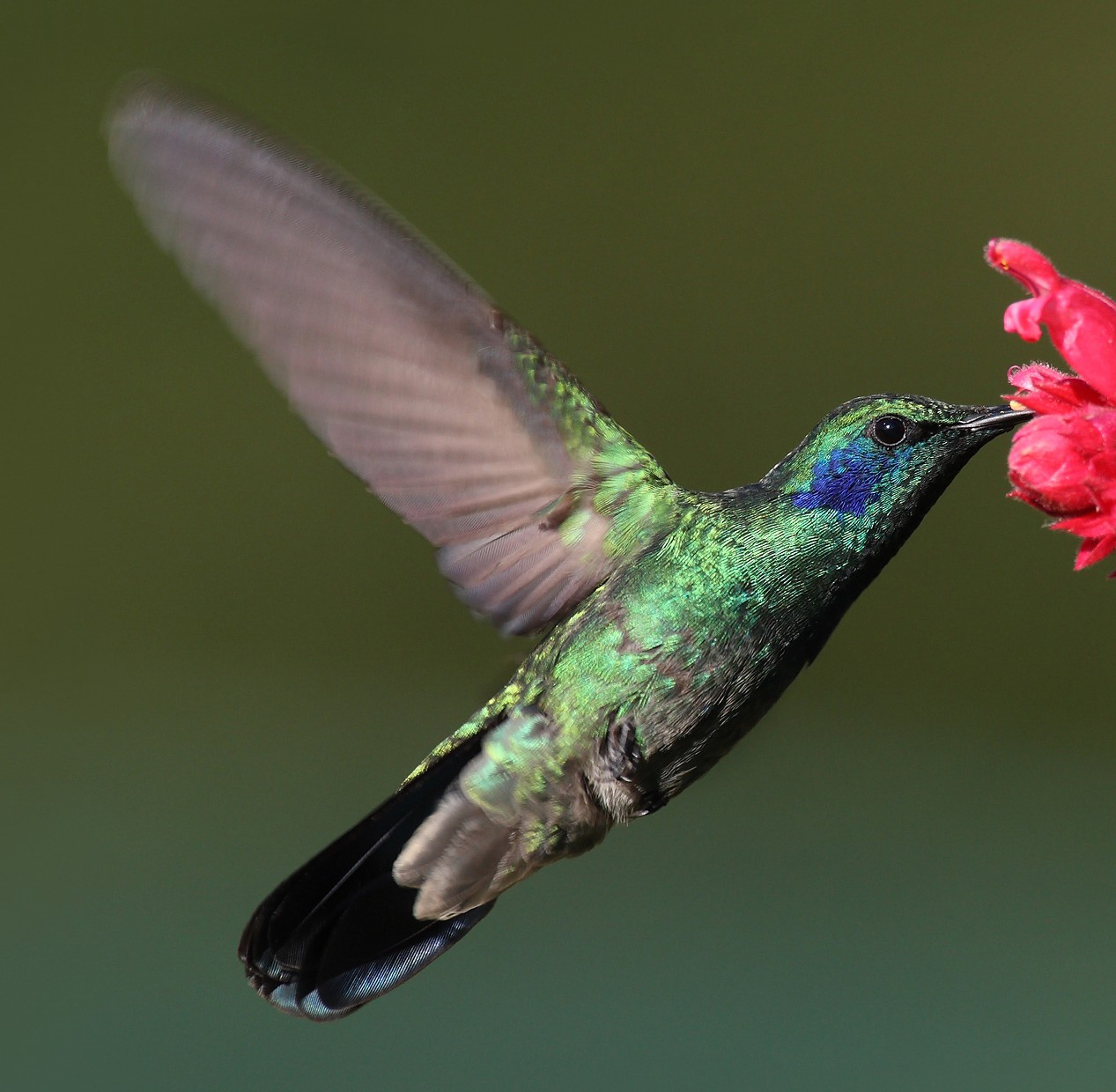 The garden talks, too, in the silence of fireflies dancing in twilight.
The garden talks, too, in the silence of fireflies dancing in twilight.
I take for granted some of this “chatter” or worse, block it with a mind too concerned about weeding, watering and countless other chores. We may even ignore our gardens’ soothing comments because we are too busy listing their deficiencies.
A garden blesses all our senses. It wants to be our personal spa and use invisible “hands” to restore our beings as surely as a masseuse eases physical aches. For the garden to heal us, we must let go; then listen to and follow nature’s command.
The garden’s message comes from the Creator who made the first garden, the one we keep trying to recreate. Ours will never be the perfection of Eden, but that doesn’t mean we shouldn’t listen to the story of paradise. Gardens still speak that same language.
by GardenLover | Dec 24, 2018 | Twelve Days of Christmas
Eleven Pipers Piping
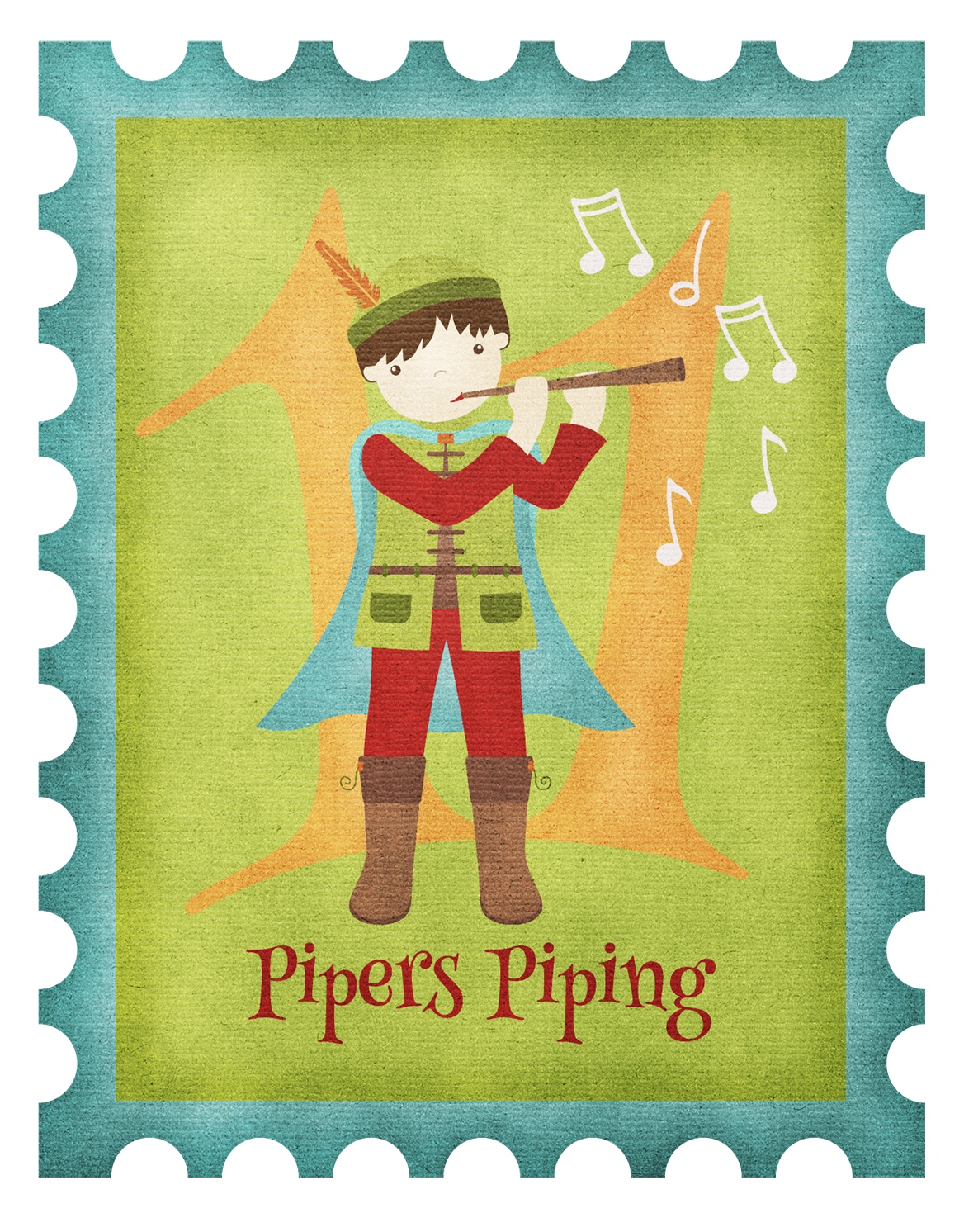 Repost from Dec. 24, 2014: The Grass Connection with Woodwinds
Repost from Dec. 24, 2014: The Grass Connection with Woodwinds
By Debra Knapke
I have memories of high school friends sucking on their reeds for their clarinets, oboes and bassoons before a rehearsal or concert. The reeds needed to be pliable, or we would hear the ear-splitting shriek of a squeezed-out note. Little did I know that the little piece of reed would reappear in my life in the form of a large grass that I teach in my plant classes.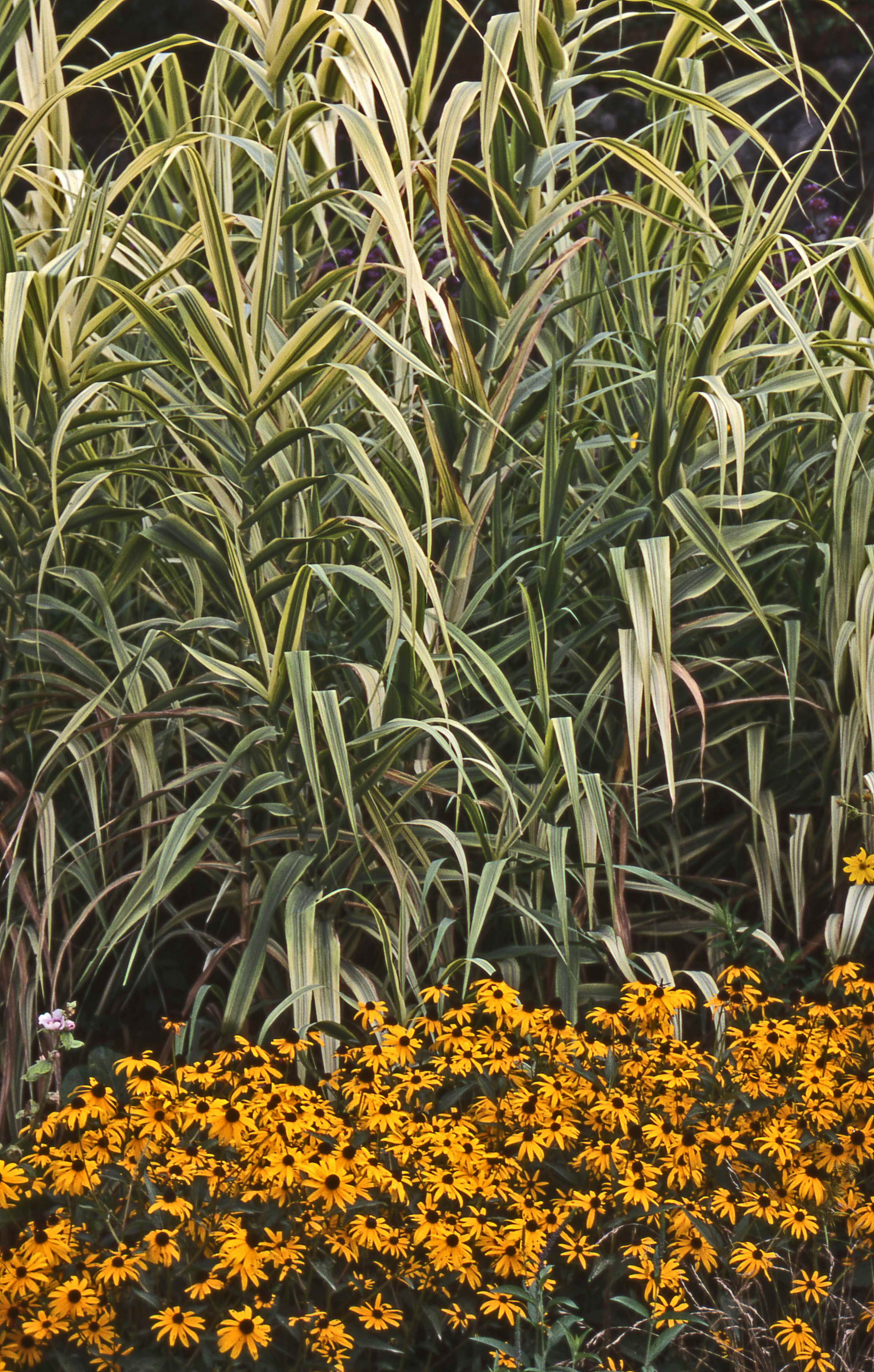
Arundo donax or giant reed grass is an impressive specimen in the garden at 10 to 15 feet tall and easily spreading five to six feet wide. I describe it as a “corn plant on steroids.” If you like the look of this structural plant, but don’t have the room, consider using the variegated variety: A. donax var. versicolor, pictured below in a beautiful combination with our native black-eyed Susan. 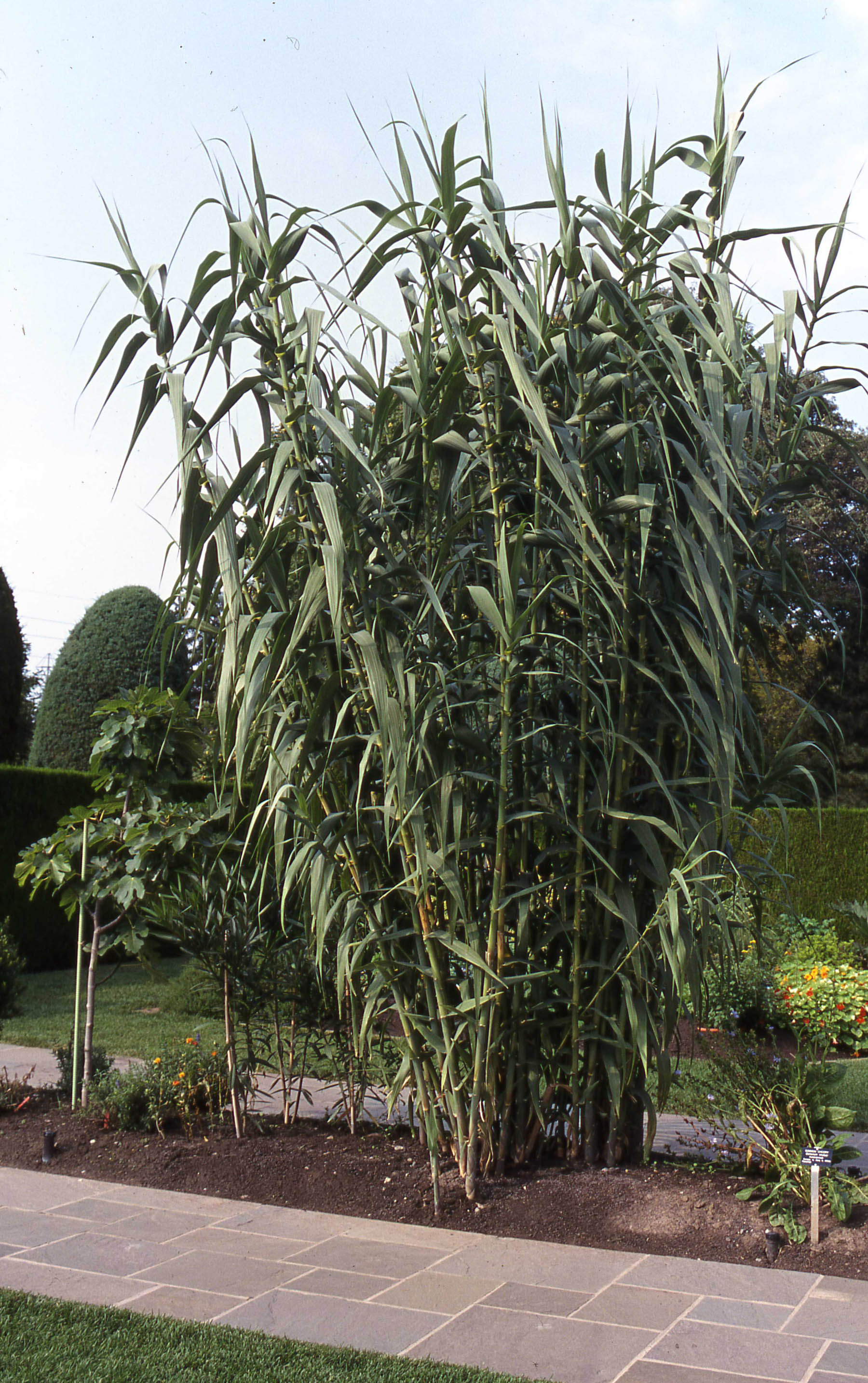
There is a dark side to this plant. In warmer states, there is a clone of giant reed that is invasive. Kentucky, Missouri, West Virginia and the southern region of Illinois comprise the northern border of its invasive march. In these states, giant reed has a long enough season in which to produce seed. For now, Ohio does not have any stands of the invasive genotype, but that will change as global climate change progresses. Another reason to use the variegated plant: for now, it does not produce seed.
‘Wishing you melodious Christmas music.
by GardenLover | Dec 23, 2018 | Twelve Days of Christmas
Ten Lords A Leaping

Repost from Dec. 23, 2014: Reach for the sky — to create garden excitement
By Michael Leach
“Leaping” conjures images of Johnny-Jump-Up doing his jack-in-the-box imitation, perhaps inspired by a prod from mischievous red-hot pokers. All the while Lord Baltimore the hibiscus looks on in glee and ignites the sky with Fireworks goldenrod and blazing stars.
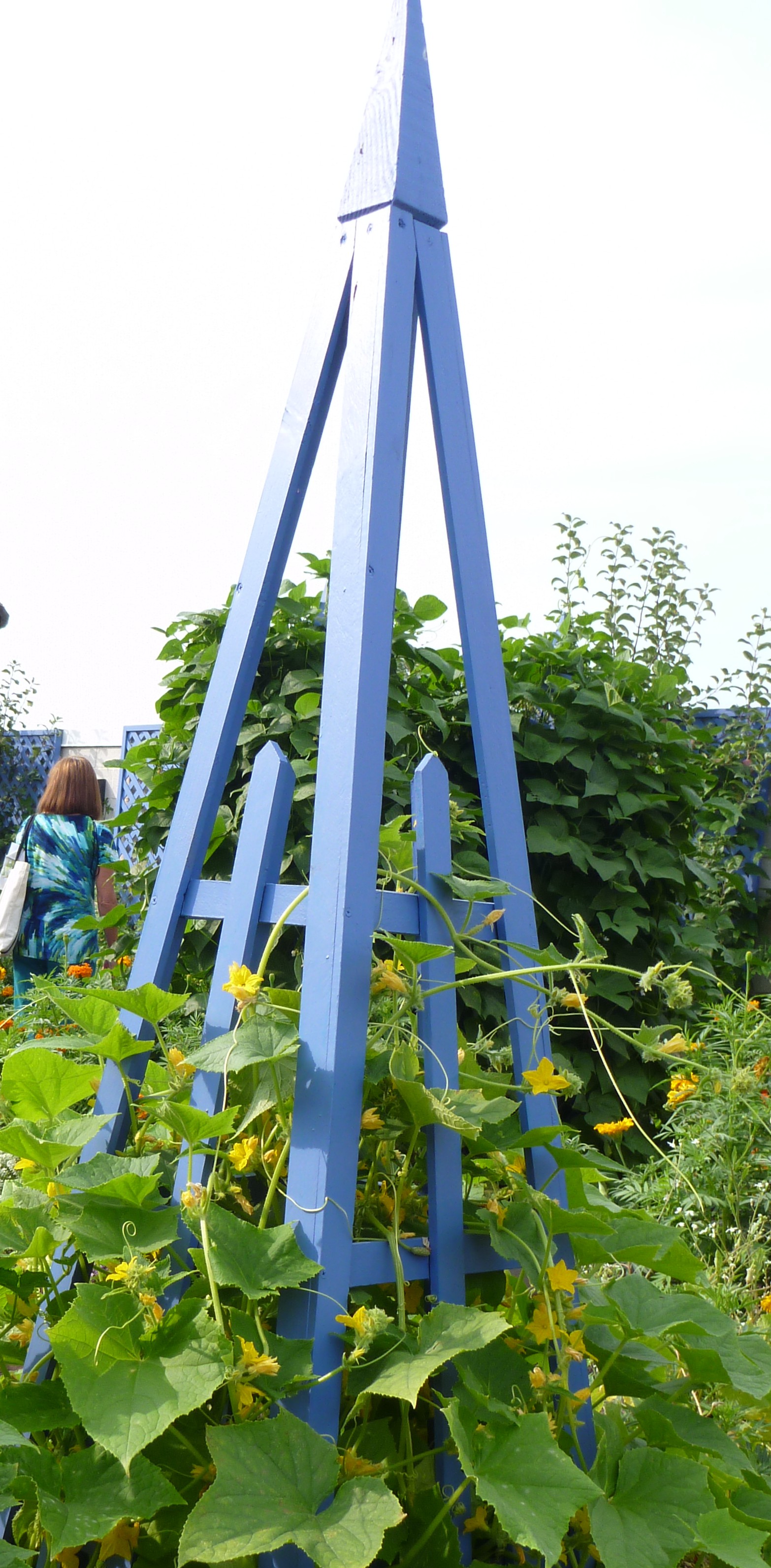 Punning aside, “leaping” draws the eye upward. Such vertical elements are must-haves in the landscape, whether we’re talking window boxes or estates. Verticals come in many forms and serve as exclamation points. Like exclamation points, they are used only with utmost care or they lose their punch.
Punning aside, “leaping” draws the eye upward. Such vertical elements are must-haves in the landscape, whether we’re talking window boxes or estates. Verticals come in many forms and serve as exclamation points. Like exclamation points, they are used only with utmost care or they lose their punch.
A series of verticals becomes the rhythm of trees in an allee or pillars of a long pergola. Shadows of such verticals transform pavement or lawn into a giant page of notebook paper.
Literally leaping — Water jets, a la Versailles, leap. Same goes for the humbler fountains in city parks and college campuses.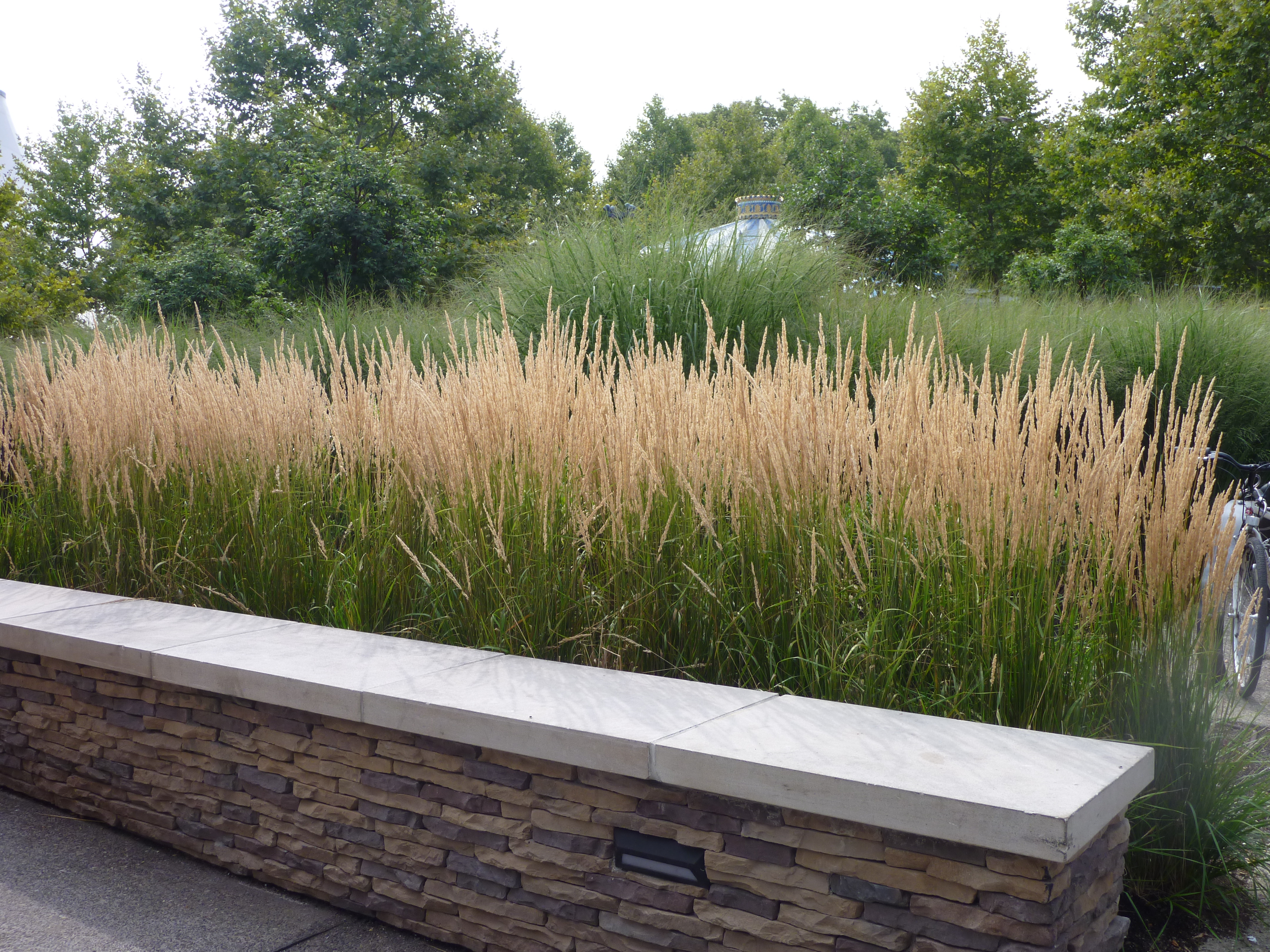 But few of us have the means or staff to keep gallons by the gazillions pumping into the air. A pity, for the effect is magical, especially so when illuminated at night.
But few of us have the means or staff to keep gallons by the gazillions pumping into the air. A pity, for the effect is magical, especially so when illuminated at night.
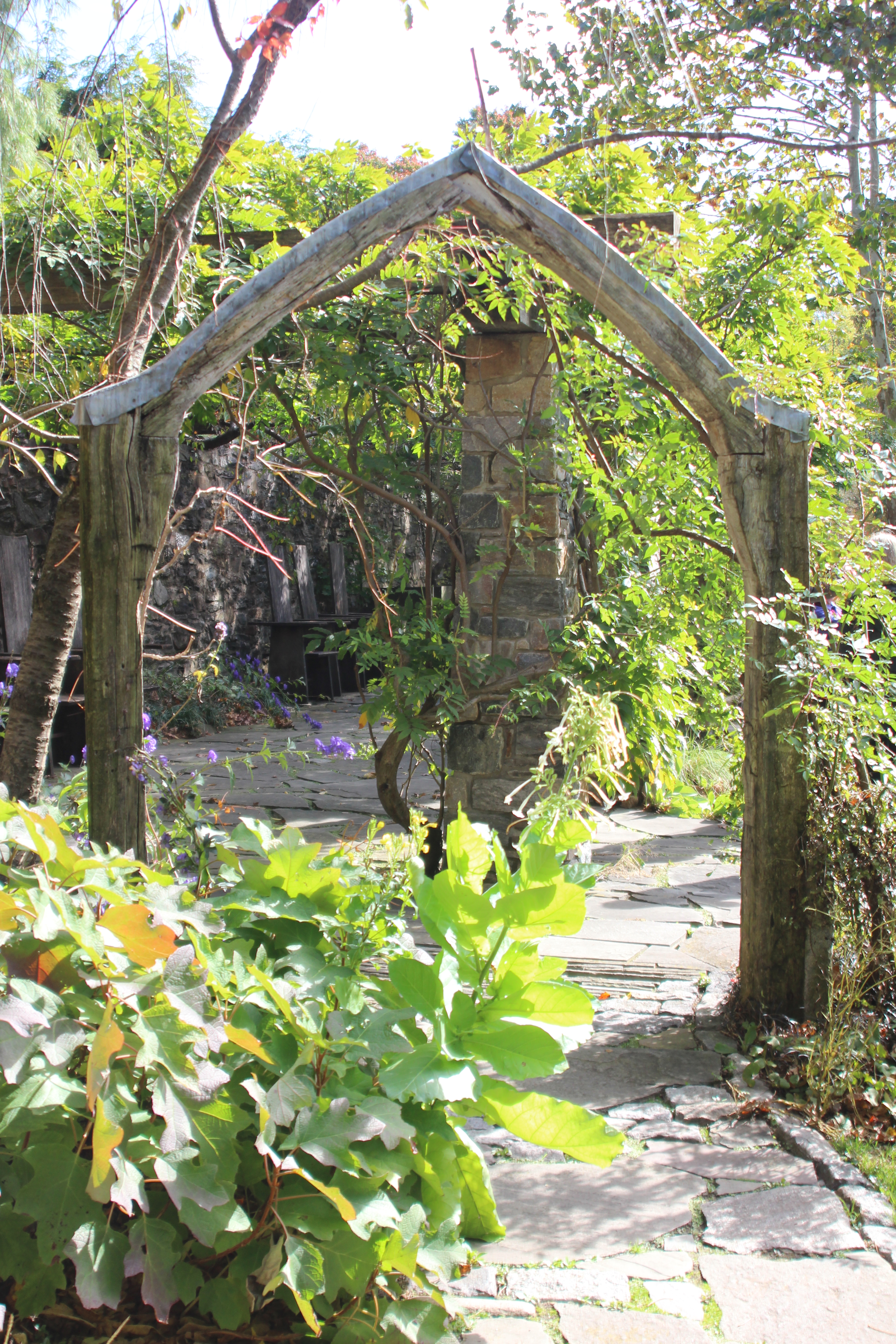 Visual leaps also come from accessories, such as arbors, sun dials, tuteurs, sculptures and columnar plants.
Visual leaps also come from accessories, such as arbors, sun dials, tuteurs, sculptures and columnar plants.
A favorite “recipe” — One of the most comforting and soothing combinations for me is a porch swing hanging from the sturdy limb of a capacious shade tree — the meatloaf of landscaping. The vertical trunk and pair of ramrod chains play a harmonious counterpart to the wide, welcoming horizontality of the seat. Few better places exist for spending a summer afternoon.
by GardenLover | Dec 22, 2018 | Twelve Days of Christmas
Nine Ladies Dancing

Repost from Dec. 22, 2014: Honoring the Mother Mary
By Debra Knapke
It seems appropriate for this season that we celebrate plants that reference the Mother Mary.
If you see Lady as part of the common name, it is probable that this is a plant that was precious to the Mother Mary. There are many stories that combine Mary’s love of plants and how they figured in different moments of her life.
Other common names that relate to Mary include virgin and, of course, the eponymous: Mary. In 2004 I was one of many Ohio authors at a book signing event in Cleveland. We were at tables in alphabetical order. My table partner was Vincenzia Krymow, author of Mary’s Flowers: Gardens, Legends, and Meditations: Living Legends of Our Lady. We had a delightful time discussing plants, philosophy and life as we waited for someone, anyone, to buy our books.
The plants loved by Mary are beautiful and many are herbal. If you decide that you would like to create a garden that honors Mary, consider these nine plants:
- Lady’s mantle – Alchemilla mollis –
- (Our) Lady’s thimble – Campanula rotundifolia
- Virgin’s bower – Clematis vitalba
- (Our) Lady’s slipper – Cypripedium calceolus
- Christmas rose; rose de Noel – Helleborus niger
- Mary’s dying plant – Lavandula officinalis (L. angustifolia is the valid name)
- Rosemary – Rosmarinus officinalis
- Marigold – Tagetes sps. and cultivars
- Costmary – Tanacetum balsamita
‘Wishing you remembrance and love for this season.
by GardenLover | Dec 21, 2018 | Twelve Days of Christmas
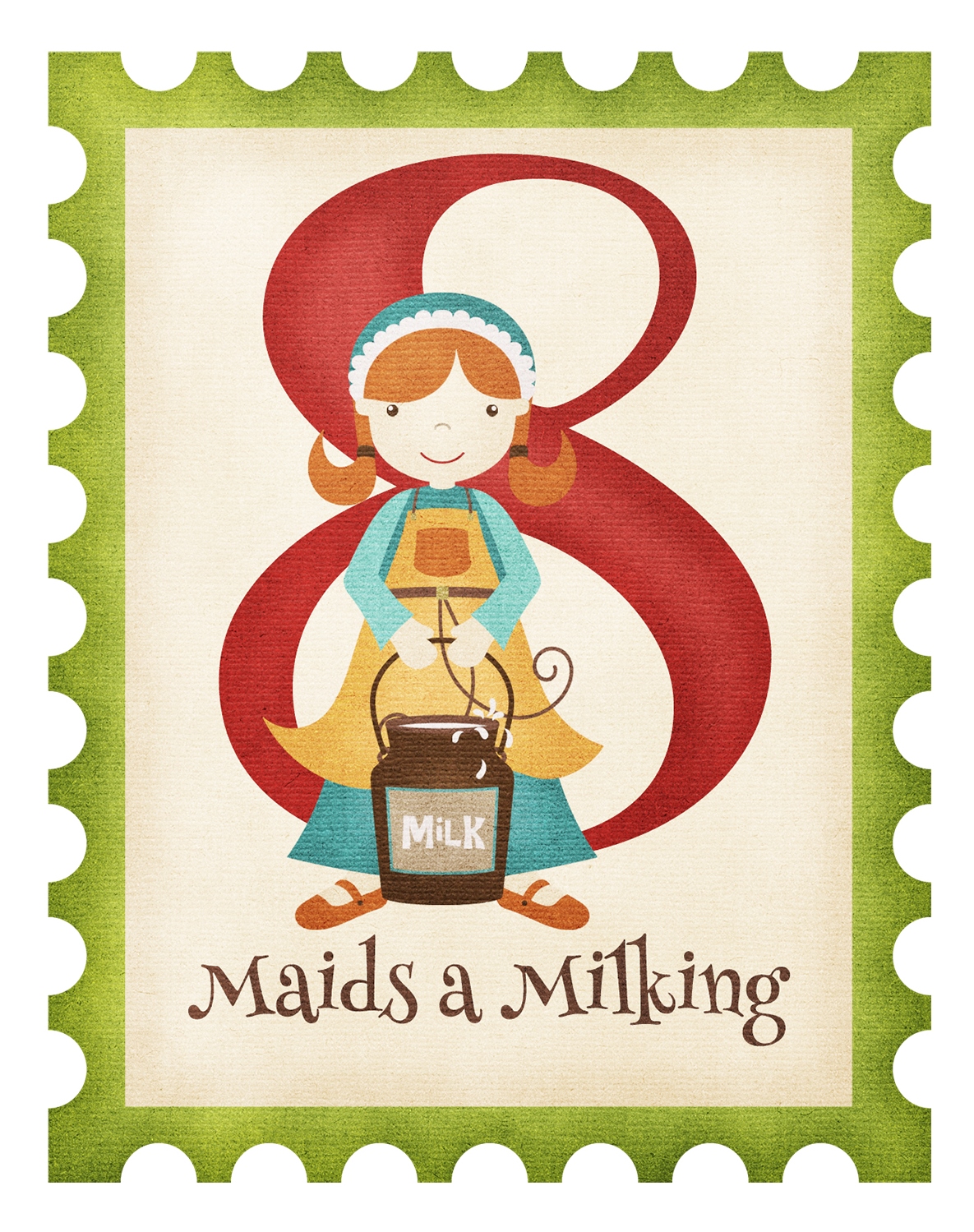 Reposted from Dec. 21, 2014: Eight Maids A Milking
Reposted from Dec. 21, 2014: Eight Maids A Milking
By Debra Knapke
I have had a love affair with campanulas since I started growing them in the mid-90’s. Call me fanciful, but their floral cups and stars look like pretty blue skirts in the garden. And, if fairies truly exist, these skirts would be their fancy dress.
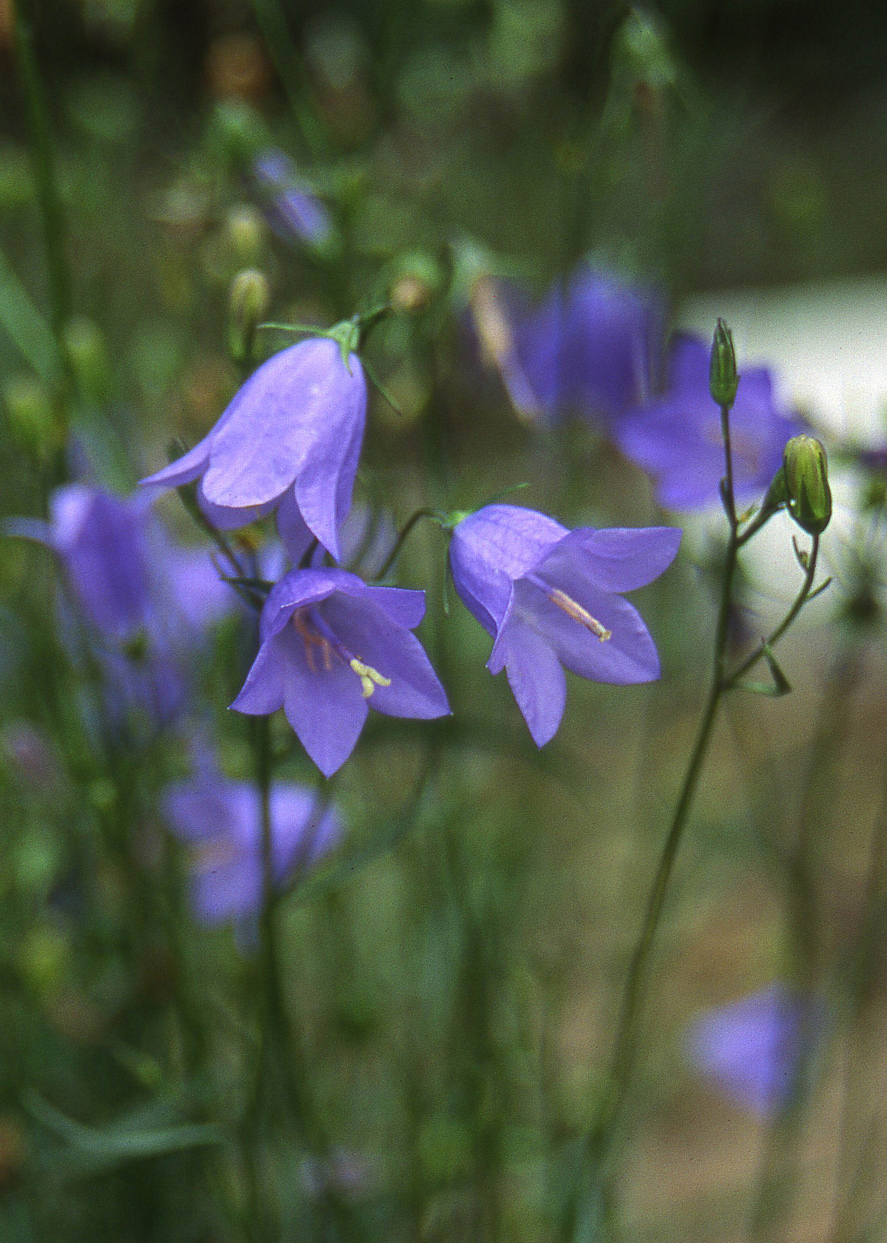
- Campanula rotundifolia
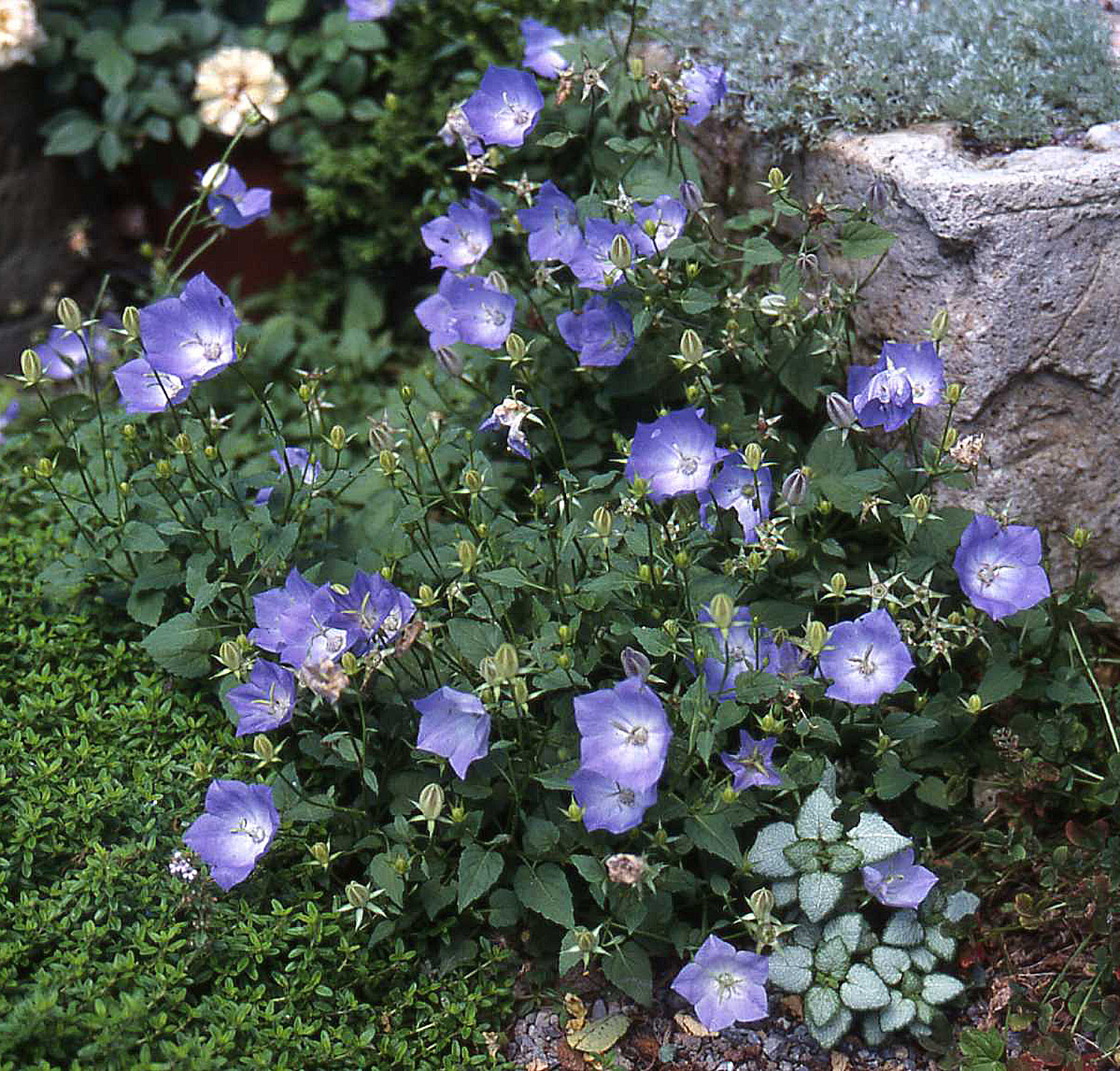
- Campanula ‘Chewton Joy’
What does this have to do with Eight Maids a Milking? One of the special characteristics of the bellflower family (Campanulaceae) is that they contain a latex-based, milky sap that either tastes bad to predators or clogs their sucking mouthparts. Think about sipping on a rubber-glove cocktail, and you’ll get the idea. A plant has to develop protective mechanisms if it is to survive being eaten by any animal that wants a meal.
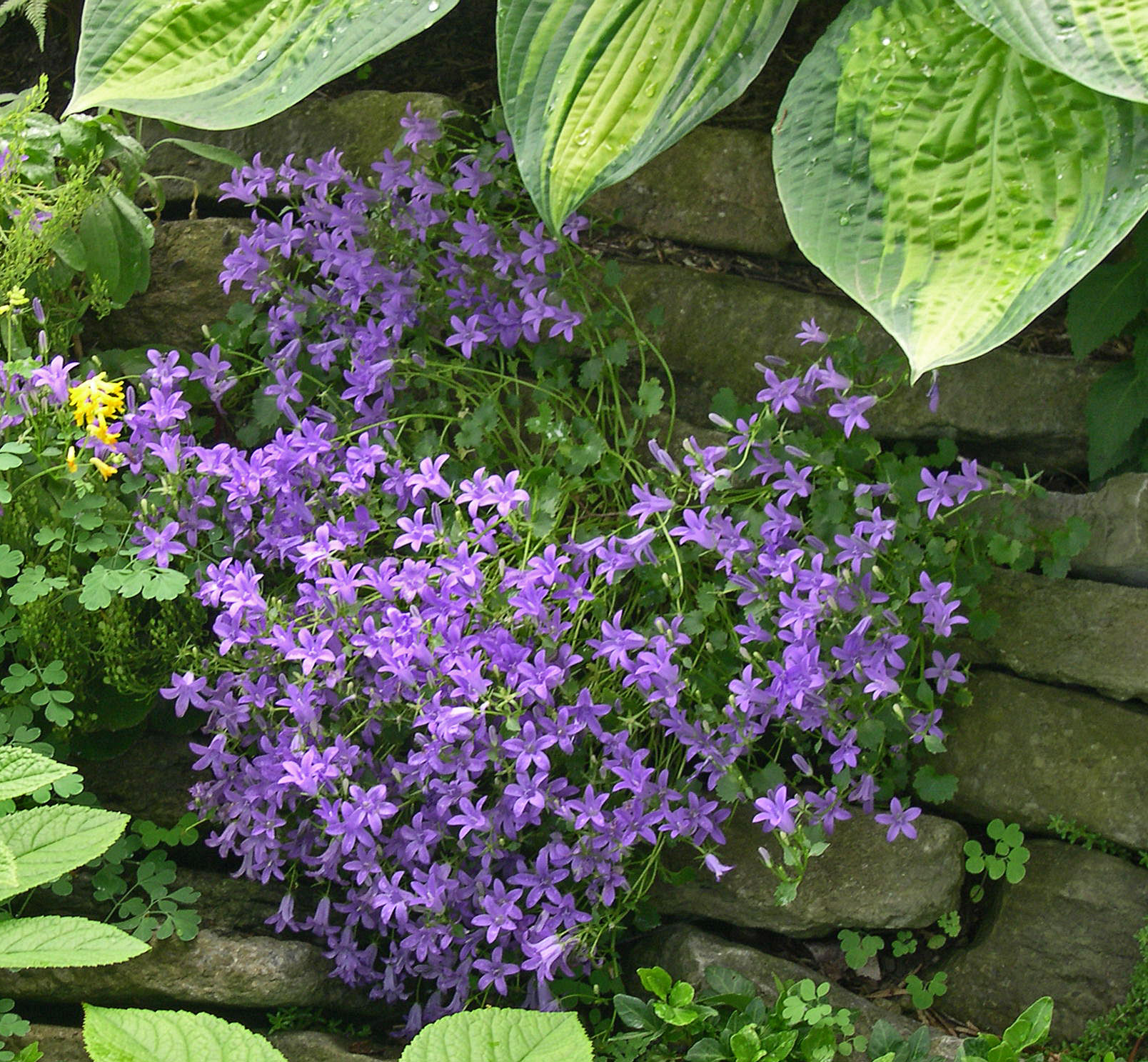
- Campanula portenschlagiana
Other plants have used this strategy. The milkweed/dogbane (Apocynaceae) and euphorbia (Euphobiaceae) families also contain an unpalatable milky sap. The poinsettia, one of our favorite Christmas decorations, will ooze sticky droplets from damaged leaves and stems.
I have been told that these droplets are very bitter… I cannot confirm that from personal experience.
‘Wishing you a tasty holiday free from bitter experiences.
by GardenLover | Dec 19, 2018 | Twelve Days of Christmas
Reposted from Dec. 20, 2014: Seven Swans A-Swimming
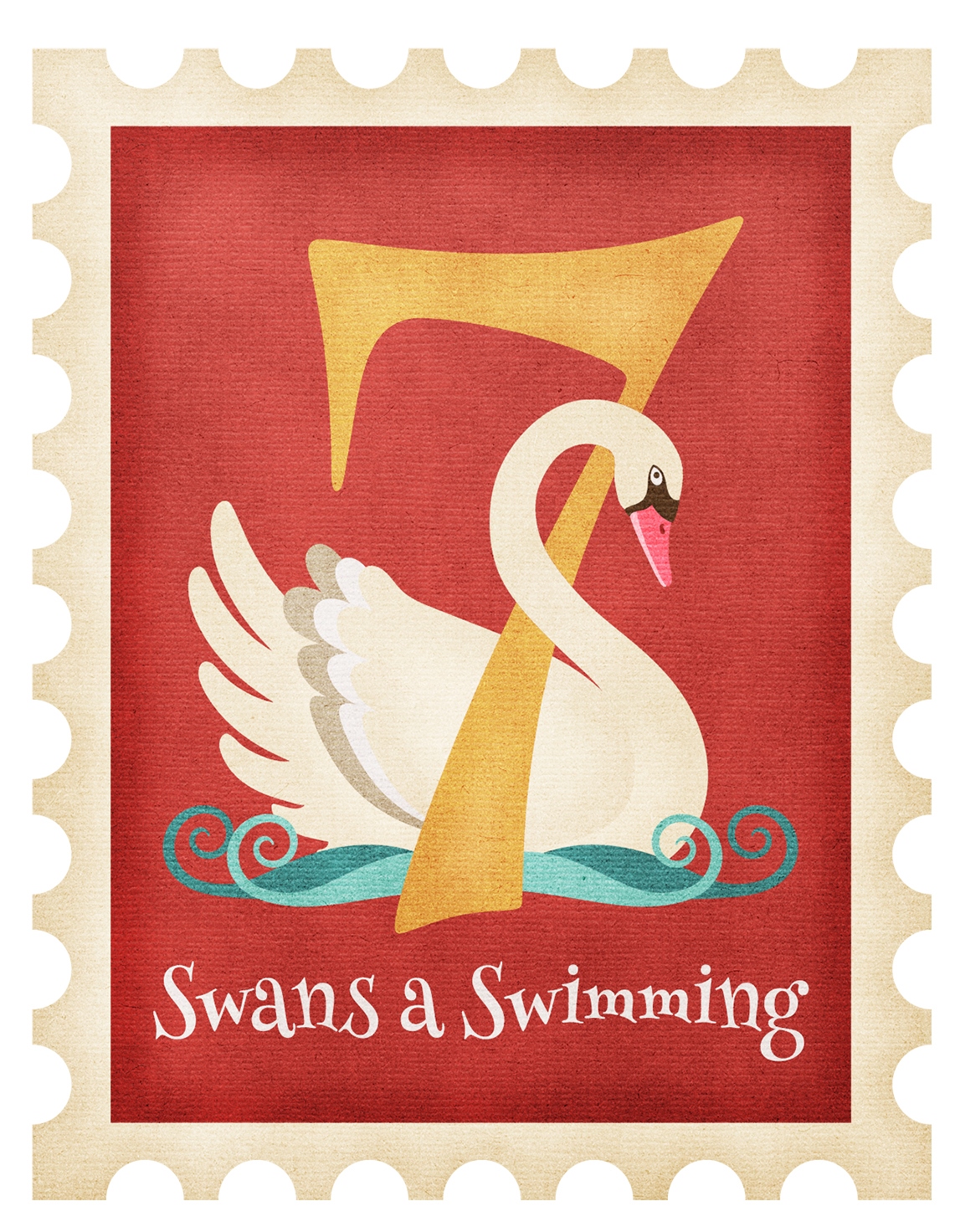
By Debra Knapke
We have all grown up knowing the story of the ugly duckling in some form. Hans Christian Andersen allegedly stated that this tale came out of his own life because he was the different child, “a tall, ugly boy with a big nose and big feet” (1) who matured into an accomplished singer and storyteller.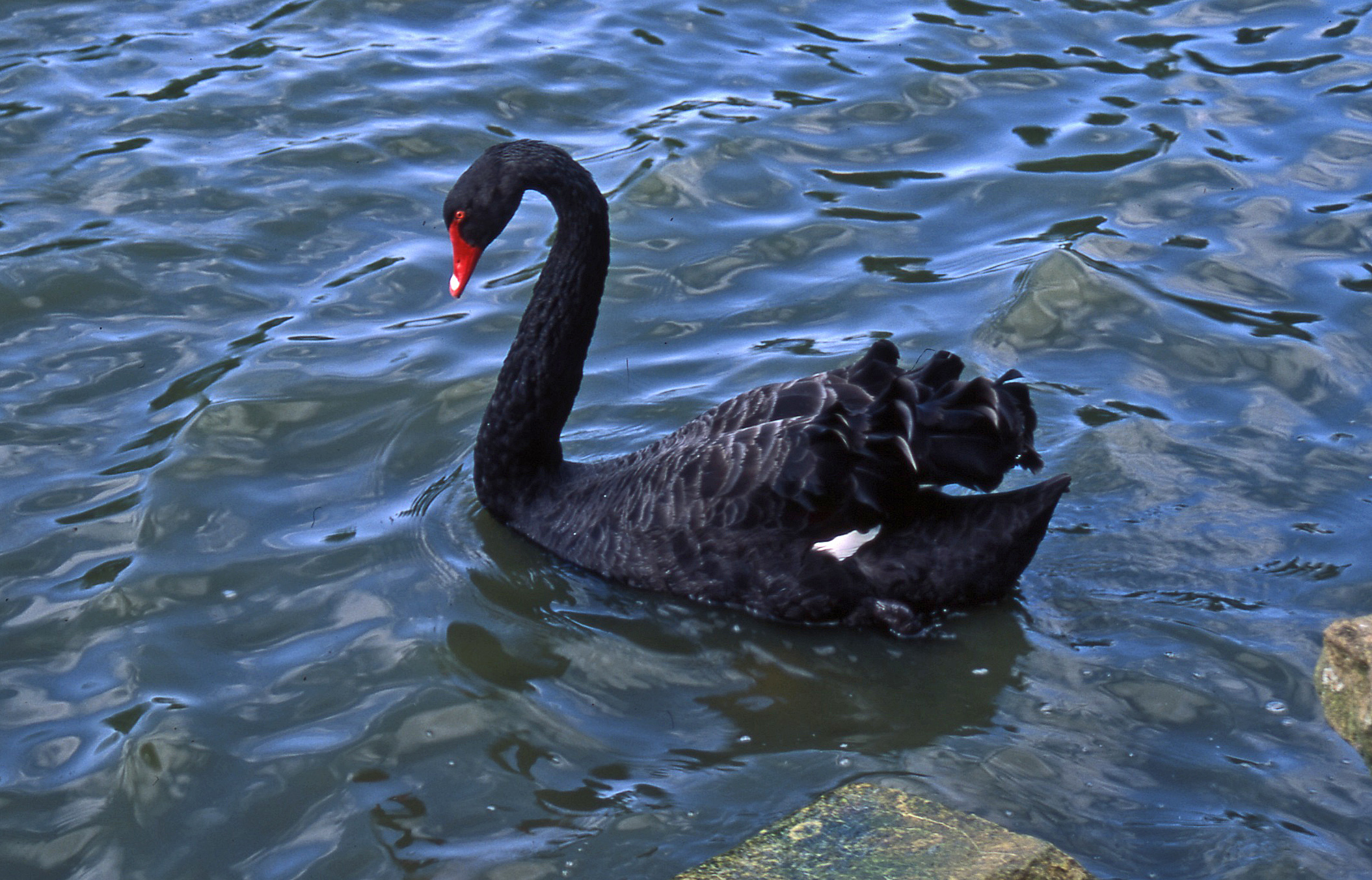
There are other tales that feature one or more swans. The swan is used as a symbol of transformation, of understanding oneself and finding balance, and of having grace and inner beauty. And like the many other birds, pairs often form life bonds.
In real life, take care when you approach a swan. That gliding beauty may grace you with her presence, but she may just as easily attack, especially if she has young. A 30-pound flying bird with a six- to eleven-foot wingspan is not an animal to be messed with.
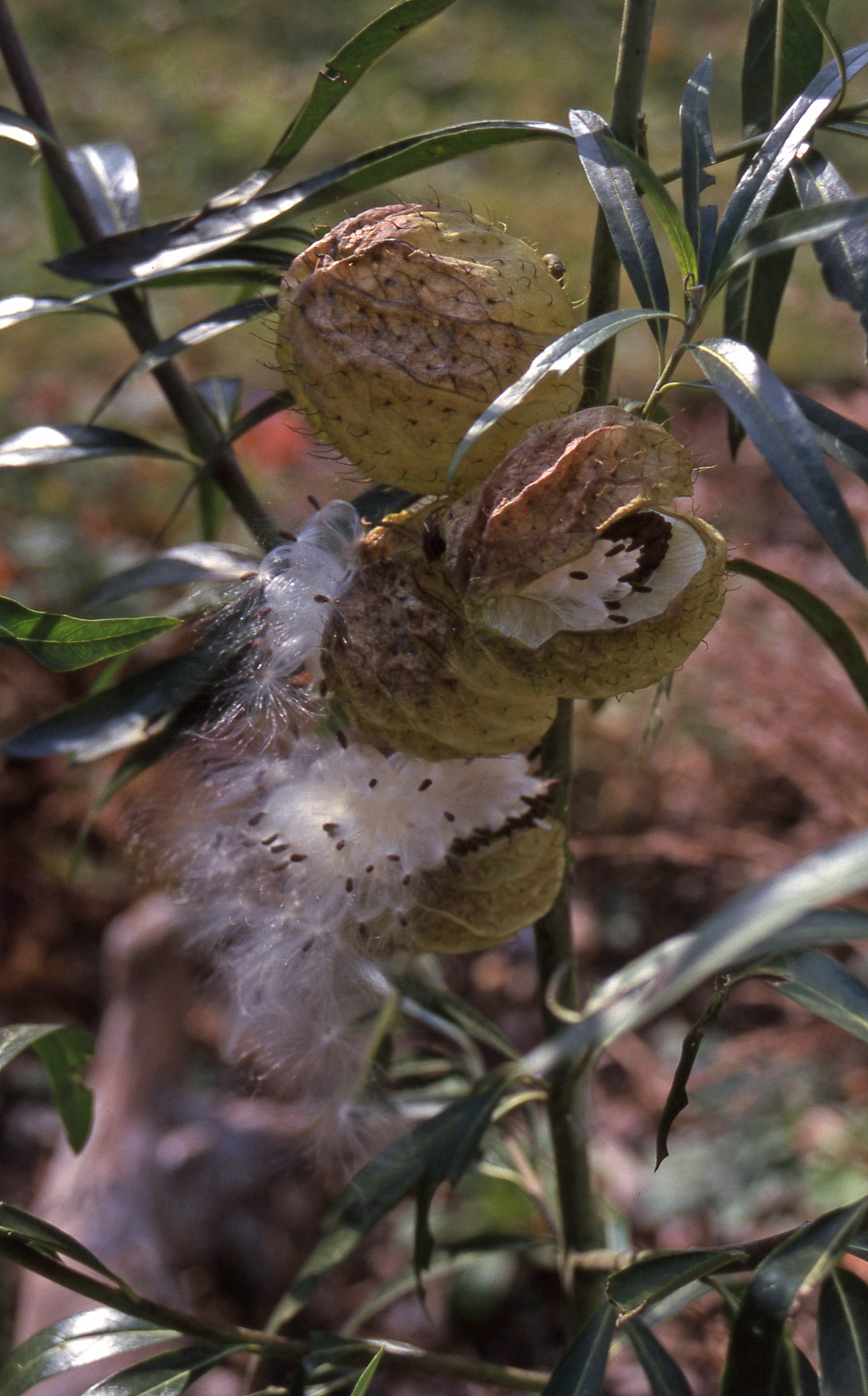
Swanplant (Asclepias physocarpa)
A different swan ornaments our gardens. The swanplant, a tender shrub, is a species of milkweed from South Africa. Its balloon-like seedpod is attached to the stem by a curved pedicel that mimics the graceful neck of a swan. It is difficult to see in the below picture, so you will just have to start it from seed next spring to see it. Sources for swanplant are limited. One source is joyfulbutterfly.com.
‘May you cultivate inner beauty and find balance this season and in the new year
1 – stated by British journalist Anne Chisholm (2005) in her review of Hans Christian Andersen: A New Life by biographer Jens Andersen, published in the US in 2006.
 Repost from Dec. 25, 2014: Pipe Down to Hear What a Garden Has to Say
Repost from Dec. 25, 2014: Pipe Down to Hear What a Garden Has to Say wind chimes and fountains are the only tolerable decibels.
wind chimes and fountains are the only tolerable decibels. The garden talks, too, in the silence of fireflies dancing in twilight.
The garden talks, too, in the silence of fireflies dancing in twilight.














